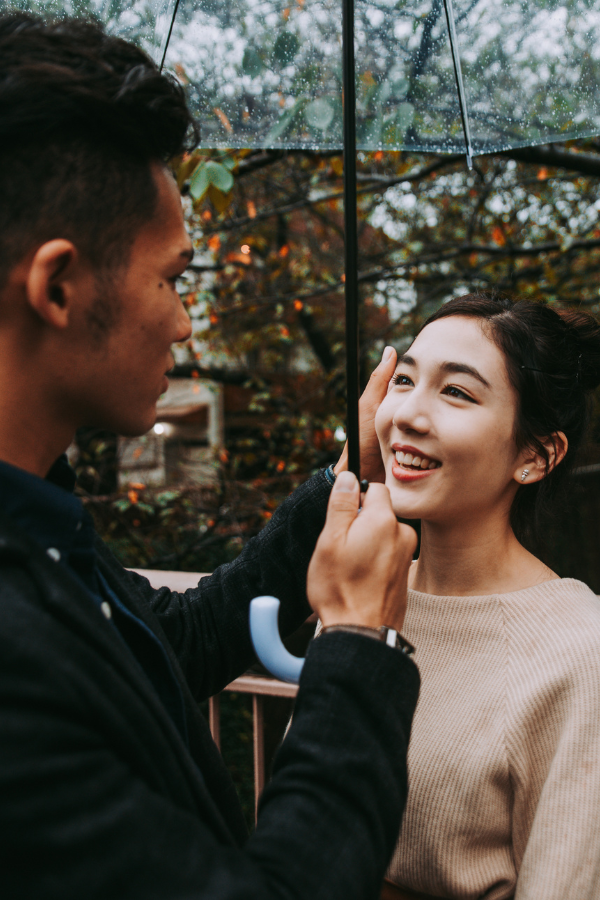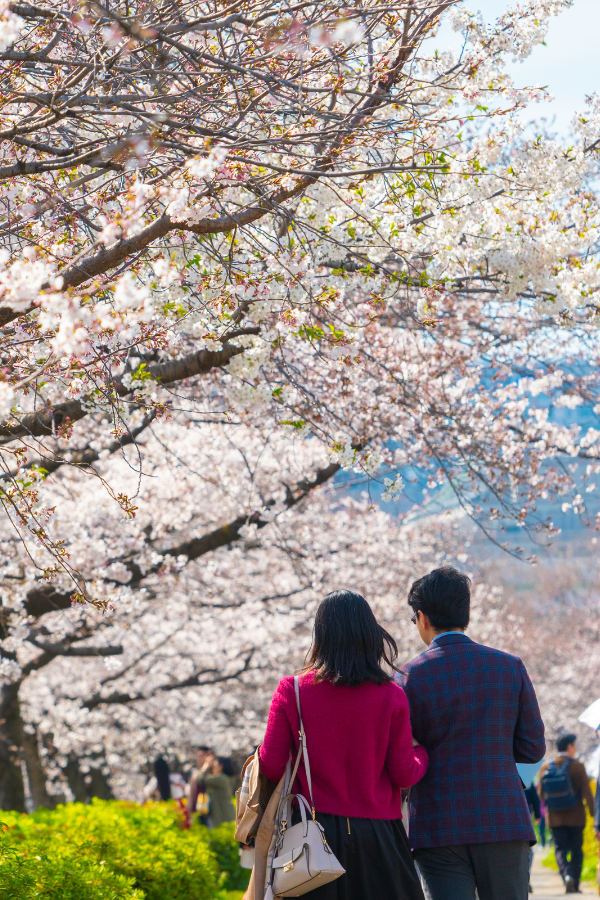

Valentine’s Day in Japan: How It Differs from American Celebrations
Summary
Reflection Questions
Journal Prompt
It’s finally February, so we can celebrate one of our favorite upcoming holidays without any shame! Valentine’s Day, universally celebrated on February 14th, has become a global symbol of love and romance, transcending borders with its message of affection, commitment, and companionship. Traditionally marked by the exchange of gifts, flowers, chocolates, and heartfelt messages between loved ones, the holiday’s core sentiment of expressing love remains consistent worldwide. However, the manner of celebration can vary significantly from one culture to another, reflecting unique customs, traditions, and interpretations of love. In this article, we take a look at the distinctive customs of Valentine’s Day in Japan. With a much heavier influence on the role of chocolate, Japanese couples, friends, and family members celebrate Valentine’s Day differently than Americans do. Let’s get into it!
The Origins and Common Observations of Valentine’s Day


Valentine’s Day is widely recognized as a day of love and affection. Its origins can be traced back to ancient Rome, with the festival of Lupercalia and the martyrdom of Saint Valentine, although the modern celebration of love is quite distinct from its historical roots.
Valentine’s Day in America


In America, Valentine’s Day is a comprehensive celebration of romantic love, marked by the exchange of gifts such as chocolates, flowers, and greeting cards, alongside romantic dinners and special dates. Couples and would-be lovers take this day to express their affection for one another in grand gestures and intimate moments alike. The holiday is heavily commercialized and expectations are high. These expectations often influence the scale and nature of celebrations.
Moreover, Valentine’s Day in America has evolved to embrace a more inclusive approach, celebrating not only romantic love but also platonic love among friends and family members. Initiatives like “Galentine’s Day,” a day dedicated to celebrating female friendships on February 13th, highlight this shift towards inclusivity, acknowledging the value of all forms of love and making the holiday relevant to a wider audience.
Valentine’s Day in Japan


Contrastingly, Japanese Valentine’s Day centers almost entirely around the giving of chocolate, but with a twist that sets it apart from Western norms. This tradition, known as “Giri-choco” and “Honmei-choco,” began in the mid-20th century as a result of a successful marketing campaign by Japanese chocolate companies. It has since evolved into a distinctive form of expressing love and obligation, demonstrating how cultural nuances significantly alter the celebration of this universal holiday.
The Japanese began celebrating Valentine’s Day shortly before World War II in the early 1930s. Central to the Japanese observance of Valentine’s Day is the giving of chocolates, but not just any chocolates. The practice is divided into two main types: giri-choco (obligation chocolate) and honmei-choco (true love chocolate). In some cases, other traditional Japanese sweets are also given. For most couples in Japanese culture, only women are expected to give gifts to their romantic partners, colleagues, and male friends.
Giri-Choco
Giri-choco Valentine’s Day chocolate is given to male colleagues, bosses, and friends as a gesture of friendship or gratitude, devoid of romantic implications. Giri-choco are also called “obligation chocolates.” This tradition underscores Japan’s cultural emphasis on harmony and social obligations, ensuring no one feels left out.
Honmei-Choco
Conversely, honmei-choco Valentine’s Day chocolates are reserved for a woman’s romantic interest. Honmei-choco is also called “true feeling chocolate.” Given by Japanese women to a romantic partner, these homemade chocolates convey sincere love and the effort put into the relationship. This distinction between store-bought and handmade chocolates highlights the importance placed on the intention behind the gift, where the act of making the chocolate by hand is seen as a labor of love.
Fuel your creative fire & be a part of a supportive community that values how you love to live.
subscribe to our newsletter
Gyaku-Choco
Valentine’s Day in Japan is predominantly characterized by women giving chocolates to men, a stark contrast to the mutual exchange of gifts seen in American celebrations. This one-sided giving has led to the emergence of “reverse chocolate” or gyaku choco where the roles are reversed, and men give gifts to women, but this occurs on White Day, celebrated on March 14th, exactly one month after Valentine’s Day. This unique response not only balances the act of gift-giving but also extends the Valentine’s Day festivities and the expression of love and appreciation over a longer period.
Tomo Choco
Recently, tomo choco or “friend chocolate” has emerged with female friends in Japan jumping on the “Galentine’s Day” trend. While these chocolates might not be as expensive or carefully made as those given to romantic partners, they are becoming an important part of how Japan celebrates Valentine’s Day. To celebrate “self love,” some Japanese women also give themselves “jibun choco.”
The Role of the Chocolate Industry in Cementing the Importance of Valentine’s Day in Japan
The role of the confectionery industry in Japan cannot be overstated when discussing Valentine’s Day. Japanese confectioners have fully embraced the holiday, creating a wide array of special products and marketing campaigns specifically for Valentine’s Day.
From luxurious, fancy chocolates to more accessible, themed treats, the variety available caters to the need for both honmei-choco and giri-choco, fueling the holiday’s commercial success. These efforts by confectioners have not only solidified Valentine’s Day as a significant commercial holiday in Japan but have also influenced social customs surrounding love and gift-giving.
This commercial aspect, coupled with the cultural practice of giving chocolates, showcases the unique blend of tradition and commerce that characterizes Valentine’s Day in Japan, distinguishing it markedly from American celebrations where the focus is more on mutual exchanges of affection through gifts, cards, and experiences.
White Day: Men’s Answer to Japanese Valentine’s Day


White Day, celebrated on March 14th, is a unique Japanese tradition that serves as a follow-up to Valentine’s Day. Originating in the late 1970s as a marketing invention by the confectionery industry, White Day is the day when men reciprocate the gifts they received from women on Valentine’s Day.
The choice of gifts is often guided by the principle of sanbai gaeshi, or “triple the return,” meaning that the value of White Day gifts should be three times that of the Valentine’s gifts. White chocolate remains a popular choice, but men also give a variety of other gifts such as cookies, jewelry, white lingerie, and marshmallows—often white to match the day’s theme.
This reciprocal gifting complements the Valentine’s Day traditions in Japan, balancing the exchange of affections and further solidifying the month-long celebration of love and gratitude. Through White Day, Japan has crafted a unique cultural practice that both contrasts with and complements the more widely recognized traditions of Valentine’s Day, emphasizing thoughtful reciprocity and the continuation of romantic and platonic gestures.
How Valentine’s Day in Japan is Changing


Valentine’s Day in Japan has seen shifts towards greater inclusivity and flexibility in recent years, reflecting changing social norms and attitudes. Traditionally marked by women giving chocolates to men, the holiday has evolved to encompass a broader range of expressions of affection.
Although the tradition of women giving chocolates to men on Valentine’s Day and men reciprocating on White Day remains prevalent, there’s a growing trend of mutual gift-giving among couples. This change mirrors a broader move towards equality in relationships and the sharing of gestures of love and appreciation.
The variety of gifts exchanged has expanded beyond chocolates. Nowadays, it’s not uncommon to see other types of gifts being exchanged on Valentine’s Day and White Day, including non-edible items, experiences, and personalized gifts, reflecting individual preferences and interests.
Similar to trends observed in other countries, there’s an increasing practice of “tomo-choco” (friend chocolate) and “jibun-choco” (self-chocolate), where people give chocolates to friends or buy them for themselves as an act of self-love and care. This shift recognizes the importance of different forms of love beyond romantic feelings, including friendship and self-appreciation.
The rise of social media and digital communication has also influenced how Valentine’s Day is celebrated, making it easier for people to express affection through digital means. This has further diversified the ways in which love and appreciation are shown, accommodating long-distance relationships and friendships.
Final Thoughts on Valentine’s Day in Japan


While Japan’s Valentine’s Day is still largely characterized by gender-specific roles, with women giving chocolates to men and the subsequent reciprocation on White Day, the way Japanese couples practice both holidays is changing. These changes indicate a move towards a more inclusive and less rigid celebration of Valentine’s Day in Japan. By embracing a wider array of expressions of love and appreciation, Valentine’s Day is becoming a more universal celebration that can be enjoyed by everyone, regardless of their relationship status or the nature of their relationships.
Design Dash
Join us in designing a life you love.
-
All About Our 7-Day Focus & Flex Challenge
Sign up before August 14th to join us for the Focus & Flex Challenge!
-
Unique Baby Names Inspired by Incredible Women from History
Inspired by historic queens, warriors, artists, and scientists, one of these unusual baby names might be right for your daughter!
-
Finding a New 9 to 5: How to Put Freelance Work on a Resume
From listing relevant skills to explaining your employment gap, here’s how to put freelance jobs on your resume.
-
What is Generation-Skipping, and How Might it Affect Sandwich Generation Parents?
The emotional pain and financial strain of generation skipping can be devastating for Sandwich Generation parents.
-
Four Material Libraries Dedicated to Sustainability, Preservation, and Education
From sustainable building materials (MaterialDriven) to rare pigments (Harvard), each materials library serves a specific purpose.
-
Do You Actually Need a Beauty Fridge for Your Skincare Products? (Yes and No.)
Let’s take a look at what dermatologists and formulators have to say about whether your makeup and skincare belong in a beauty fridge.








